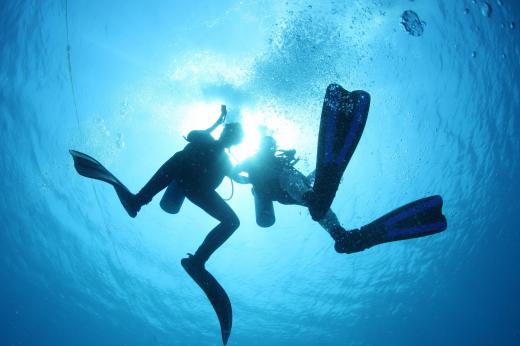At Sports&Hobbies, we're committed to delivering accurate, trustworthy information. Our expert-authored content is rigorously fact-checked and sourced from credible authorities. Discover how we uphold the highest standards in providing you with reliable knowledge.
What is a Buoyancy Compression Device?
Essentially, a buoyancy compression device (BCD) is an apparatus that helps to control the buoyant nature of an object, often by the use of some sort of a bladder structure that can be inflated or deflated in order to maintain a given level of buoyancy. In other instances, the BCD may be composed of materials that have natural buoyant qualities, and thus can allow persons or objects to float in water or other liquids.
One excellent example of a buoyancy compression device would be the buoyancy control valve on a diving suit. The suits are equipped with a small tank that contains gases that are used during a dive. By controlling the introduction of the gases into the watertight diver’s suit, the diver can create the correct level of buoyancy to allow for the exploration of life and object well below the water surface, by maintaining the proper pressure in the suit.

When the diver is ready to come up, it is just a matter of decreasing the amount of gas within the suit to allow a safe return to the surface. The buoyancy compression device also is found in a number of other products that are related to water recreation. For example, any type of flotation device, such as water wings, life vests, or even the inflatable life raft could be described as a BCD.
When it comes to applications that are not associated with underwater exploration or water recreation, construction and the oil business come to mind. In both industries, variations on the basic two-bladder composition of such a device allow for the placement of steel and stone structures underwater as underpinnings for buildings and work sites. Construction applications also could be viewed as a combination of building and underwater research, as divers are often used to check for the proper placement of underwater pillars and foundations.
Whether used for fun or for more practical concerns, the concept of the buoyancy compression device is one that has been with humanity for many years, and will not doubt see a number of new applications as time goes on. In the meantime, remember that whether you have driven across a bridge or enjoyed a documentary on sunken ships, a buoyancy compression device has touched your life.
AS FEATURED ON:
AS FEATURED ON:











Discuss this Article
Post your comments